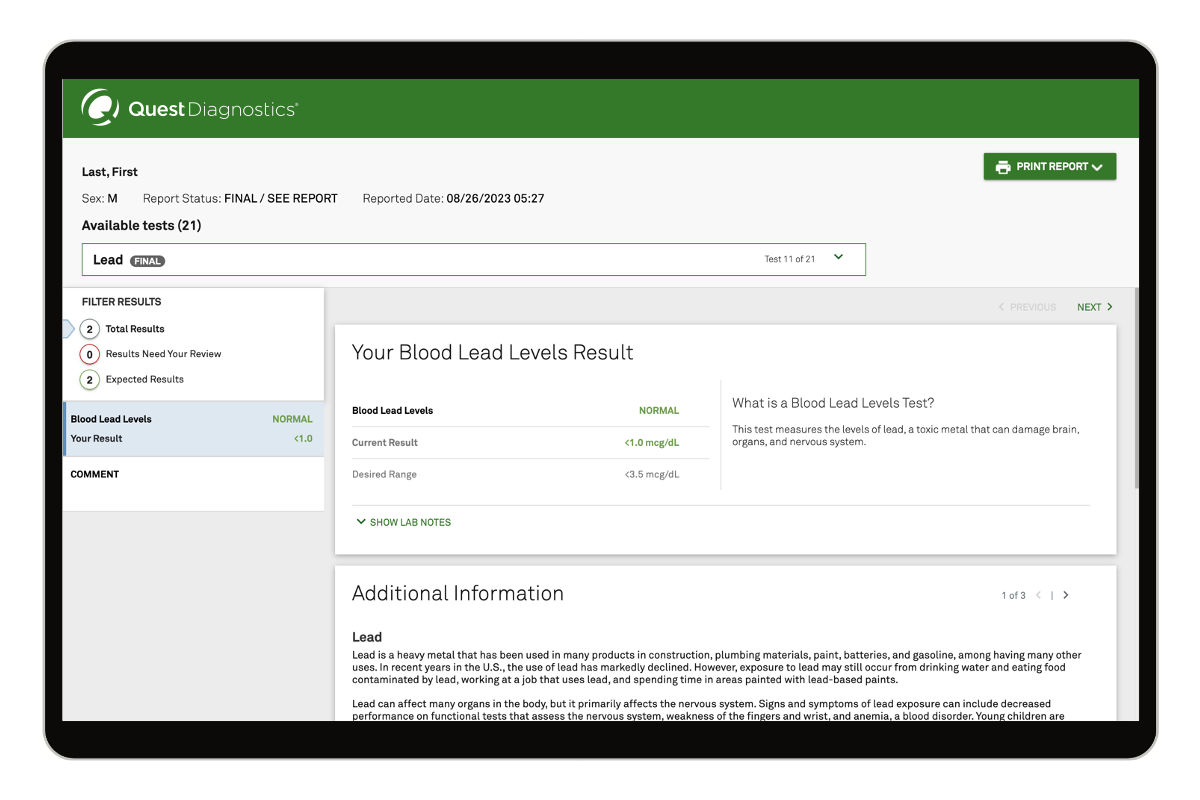Lead Test
This test checks for elevated lead levels in your blood. Consider lead testing if you are concerned about exposure to this toxic metal in your home, workplace, or environment. Read moreThis lead blood test helps identify signs of significant lead exposure. Lead is a toxic metal found naturally in air, water, soil and in many consumer products. Individuals may have low levels of lead in their blood from these exposures. However, high levels of lead may indicate significant exposure in your home, workplace, or environment. Lead’s toxicity can result in damage to the brain, organs, and nervous system (ie lead poisoning).
Buy your own lead test online with Quest. No doctor’s visit is required – simply purchase lead testing, visit a nearby Quest® location for sample collection, and get fast results.
How it works
questhealth.com offers 100+ consumer-initiated Quest Diagnostics lab tests to empower you to have more control over your health journey. Choose from a variety of test types that best suit your needs.
An increased risk of lead exposure may also result from using imported household goods, toys, food, and medicines, or engaging in hobbies that use lead products, such as glass blowing.
1Committee on Practice and Ambulatory Medicine, Bright Futures Periodicity Schedule Workgroup. 2021 Recommendations for preventive pediatric health care. Pediatrics. 2021;147(3):e2020049776. doi:10.1542/peds.2020-049776
2CDC. Low level lead exposure harms children: a renewed call for primary prevention. Report of the Advisory Committee on Childhood Lead Poisoning Prevention. January 4, 2012.
*AMERICA IS WRAPPED IN MILES OF TOXIC LEAD CABLES. https://www.wsj.com/articles/lead-cables-telecoms-att-toxic-5b34408b



